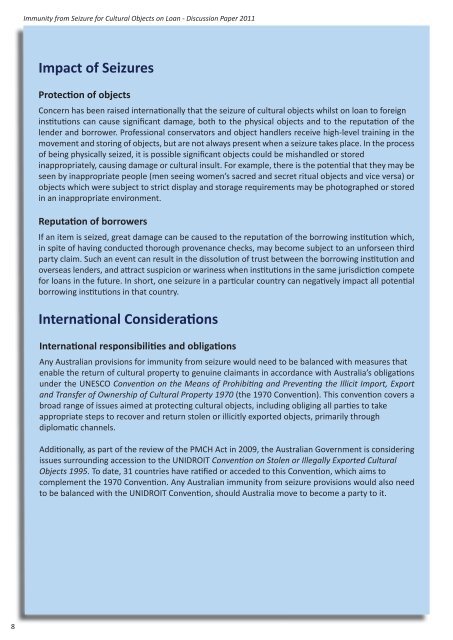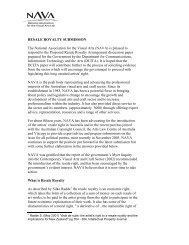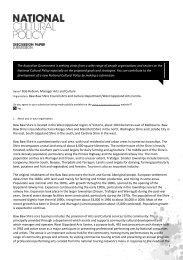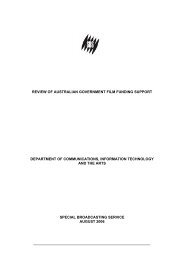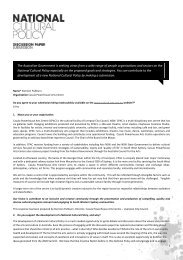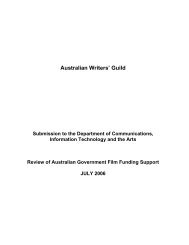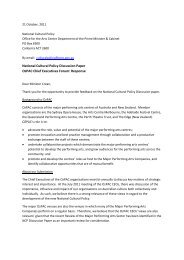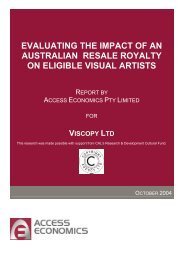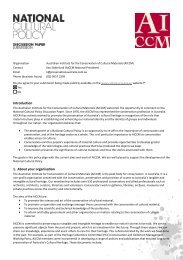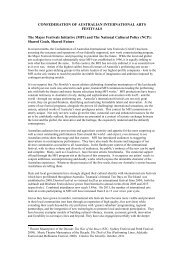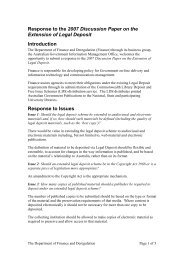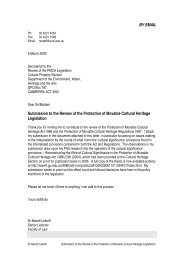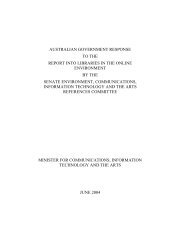Discussion paper (PDF - 459 KB)
Discussion paper (PDF - 459 KB)
Discussion paper (PDF - 459 KB)
You also want an ePaper? Increase the reach of your titles
YUMPU automatically turns print PDFs into web optimized ePapers that Google loves.
Immunity from Seizure for Cultural Objects on Loan - <strong>Discussion</strong> Paper 2011Impact of SeizuresProtection of objectsConcern has been raised internationally that the seizure of cultural objects whilst on loan to foreigninstitutions can cause significant damage, both to the physical objects and to the reputation of thelender and borrower. Professional conservators and object handlers receive high-level training in themovement and storing of objects, but are not always present when a seizure takes place. In the processof being physically seized, it is possible significant objects could be mishandled or storedinappropriately, causing damage or cultural insult. For example, there is the potential that they may beseen by inappropriate people (men seeing women’s sacred and secret ritual objects and vice versa) orobjects which were subject to strict display and storage requirements may be photographed or storedin an inappropriate environment.Reputation of borrowersIf an item is seized, great damage can be caused to the reputation of the borrowing institution which,in spite of having conducted thorough provenance checks, may become subject to an unforseen thirdparty claim. Such an event can result in the dissolution of trust between the borrowing institution andoverseas lenders, and attract suspicion or wariness when institutions in the same jurisdiction competefor loans in the future. In short, one seizure in a particular country can negatively impact all potentialborrowing institutions in that country.International ConsiderationsInternational responsibilities and obligationsAny Australian provisions for immunity from seizure would need to be balanced with measures thatenable the return of cultural property to genuine claimants in accordance with Australia’s obligationsunder the UNESCO Convention on the Means of Prohibiting and Preventing the Illicit Import, Exportand Transfer of Ownership of Cultural Property 1970 (the 1970 Convention). This convention covers abroad range of issues aimed at protecting cultural objects, including obliging all parties to takeappropriate steps to recover and return stolen or illicitly exported objects, primarily throughdiplomatic channels.Additionally, as part of the review of the PMCH Act in 2009, the Australian Government is consideringissues surrounding accession to the UNIDROIT Convention on Stolen or Illegally Exported CulturalObjects 1995. To date, 31 countries have ratified or acceded to this Convention, which aims tocomplement the 1970 Convention. Any Australian immunity from seizure provisions would also needto be balanced with the UNIDROIT Convention, should Australia move to become a party to it.8


